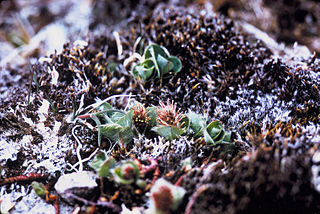
The Belcher Islands are an archipelago in the southeast part of Hudson Bay near the centre of the Nastapoka arc. The Belcher Islands are spread out over almost 3,000 km2 (1,200 sq mi). Administratively, they belong to the Qikiqtaaluk Region of Nunavut, Canada. The hamlet of Sanikiluaq is on the north coast of Flaherty Island and is the southernmost in Nunavut. Along with Flaherty Island, the other large islands are Kugong Island, Tukarak Island, and Innetalling Island. Other main islands in the 1,500–island archipelago are Moore Island, Wiegand Island, Split Island, Snape Island and Mavor Island, while island groups include the Sleeper Islands, King George Islands, and Bakers Dozen Islands.

Ukkusiksalik National Park is a national park in Nunavut, Canada. It covers 20,885 km2 (8,064 sq mi) of tundra and coastal mudflats south of the Arctic Circle and the hamlet of Naujaat, from Hudson Bay's Roes Welcome Sound towards the western Barrenlands and the source of Brown River. The park surrounds Wager Bay, a 100 km (62 mi)-long inlet on the Hudson Bay. Although the smallest of Nunavut's four national parks, it is the sixth largest in Canada. Its name relates to steatite found there: Ukkusiksalik means "where there is material for the stone pot".

Salix arctica, the Arctic willow, is a tiny creeping willow. It is adapted to survive in Arctic conditions, specifically tundras.

Salix nigra, the black willow, is a species of willow native to eastern North America, from New Brunswick and southern Ontario west to Minnesota, and south to northern Florida and Texas.
Eurybia radulina, commonly known as the roughleaf aster, is an herbaceous perennial in the family Asteraceae. It is native to western North America, where it is present primarily west of the Cascade Range in both Canada and the United States. Its habitats include dry rock outcrops, slopes, edges of forests, and oak woodlands.

Bolboschoenus maritimus is a species of flowering plant from family Cyperaceae. Common names for this species include sea clubrush, cosmopolitan bulrush, alkali bulrush, saltmarsh bulrush, and bayonet grass. It is found in seaside wetland habitats over much of the world. It is widespread across much of temperate and subtropical Africa, Asia, Europe, North America, South America and various islands.

Salix geyeriana is a species of willow known by the common names Geyer's willow, Geyer willow and silver willow. The type specimen was collected by the botanist Karl Andreas Geyer, for whom it was named. Its conspicuous, yellow flowers begin to bloom as early as March, to as late as the end of June.

Salix hookeriana is a species of willow known by the common names dune willow, coastal willow, and Hooker's willow.

Salix sitchensis is a species of willow known by the common name Sitka willow.

Tofieldia is a small genus of flowering plants described as a genus in 1778. It is widespread across much of Europe, Asia, and North America.

Pentagramma triangularis, commonly known as the gold fern or the goldback fern, is a species of fern in the family Pteridaceae, native to Western North America, with highest abundance in the state of California. Its common name "goldback" refers to the light yellow color of the fern's protective coating which inhibits moisture loss. The gold texture appears as a dry powder that is excreted on the underside of the fern. The Latin specific epithet Pentagramma derives from "five lines" or "stripes" while triangularis derives from "three sided", describing the shape of the fern's broad triangular fronds.

Erigeron poliospermus is a species of flowering plant in the family Asteraceae known by the common names gray-seeded fleabane, purple cushion fleabane, and hairy-seed fleabane. Native to western North America, it is mainly found to the east of the Cascade Range in Washington, Oregon, and Idaho.

Eucephalus paucicapitatus is a North American species of flowering plant in the family Asteraceae known by the common name Olympic Mountain aster. It grows on rocky slopes and in subalpine meadows at high elevations in and near Olympic National Park in the US State of Washington, and on Vancouver Island in the Canadian Province of British Columbia.

Salix wolfi, or Wolf's willow, is a species of willow native to western United States, from north-central Montana and central Oregon to northern New Mexico.
Salix calcicola, known as limestone willow or woolly willow, is a species of willow native to the subarctic and Arctic regions of Canada, including Nunavut Islands, continental Nunavut, northern Quebec, Labrador. Arctic islands: Baffin, King William, Southampton, and Coats.

Salix tweedyi, or Tweedy's willow, is a shrub in the willow family. It is native to the northwestern United States.
Salix athabascensis is a species of willow first described by Hugh Miller Raup.

Salix turnorii, also known as Turnor's willow, is a species of willow. It is endemic to the Athabasca Sand Dunes Provincial Park in Saskatchewan, Canada. It is listed as imperiled by NatureServe.

Timmia megapolitana, also known as Indian feather moss and warrior moss is a genus of moss in the family Timmiaceae and order Timmiales.
Salix sinopurpurea is a species of willow native to central and southern China. It is the Chinese version of Salix purpurea.
















